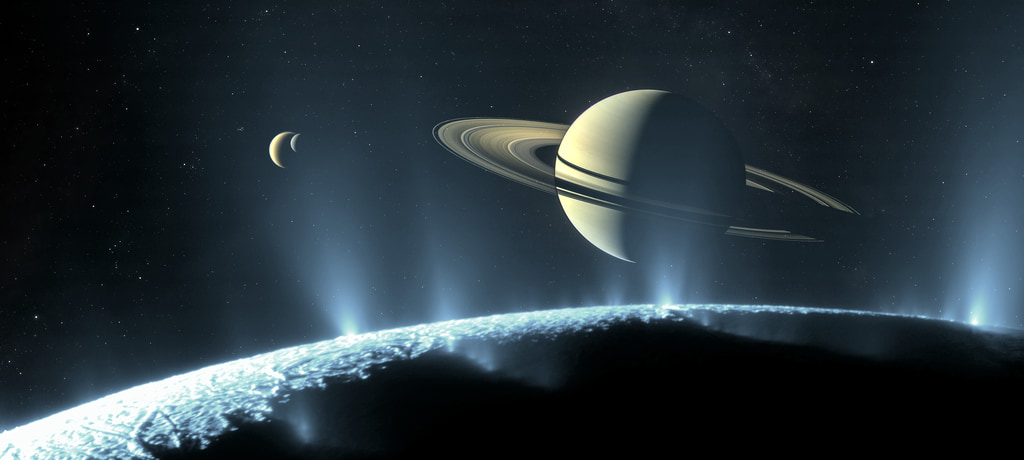Saturn's Rings Are Disappearing
Scientists from NASA Goddard have discovered that not only are Saturn's rings younger than previously thought, but also that the rings are actually disappearing at a rapid pace through a process called "ring rain." Learn more about this phenomena in this animated video.
Video narrated by: Jerome Hruska
Music Provided by Killer Tracks: "The Butterfly Effect" - Gresby Race Nash
Watch this video on the NASA Goddard YouTube channel.
This video explores how Saturn is losing its rings at a rapid rate, and what that also reveals about the planet's history.
Infrared observations of Saturn were recorded using the 10-meter diameter Keck telescope in Hawaii. Through a careful analysis, Dr. James O'Donoghue and his team found a series of unusual bright and dark bands extending around the planet's upper atmosphere. It was found that these bands are linked to Saturn's rings by magnetic field lines, indicating that water ice from the rings is "raining" into the planet.
This mechanism is called "ring rain," and was discovered using Voyager spacecraft data in the 1980s by study co-author Dr. Jack Connerney. In this process, electrically charged icy dust in Saturn's rings is pulled into the planet along magnetic field lines by gravity. Modeling work by study co-author Dr. Luke Moore shows that if there is a small amount of rain, the ionosphere glows, while if there is a large amount of rain, it becomes dark.
In this new study, the rate of water flow into the planet is estimated to be one Olympic sized swimming pool every half an hour, meaning Saturn's rings will be gone in under 300 million years. This is short relative to the 4.5 billion-year age of the solar system. The findings suggest that giant planetary ring systems are not built to last forever.
NASA scientist James O'Donoghue visualizes how Saturn's rings might look in the next 100 to 300 million years, before they disappear entirely, based on his team's "ring rain" study.
For More Information
Credits
Please give credit for this item to:
NASA's Goddard Space Flight Center
Music by: Killer Tracks
-
Producer
- David Ladd (USRA)
-
Video editor
- David Ladd (USRA)
-
Animator
- Lisa Poje (Freelance)
-
Scientist
- James O'Donoghue (USRA)
-
Narrator
- Jerome Hruska (Self)
Release date
This page was originally published on Monday, December 17, 2018.
This page was last updated on Wednesday, May 3, 2023 at 1:46 PM EDT.
Related papers
https://www.sciencedirect.com/science/article/pii/S0019103518302999?via%3Dihub
https://www.sciencedirect.com/science/article/pii/S0019103518302999?via%3Dihub
